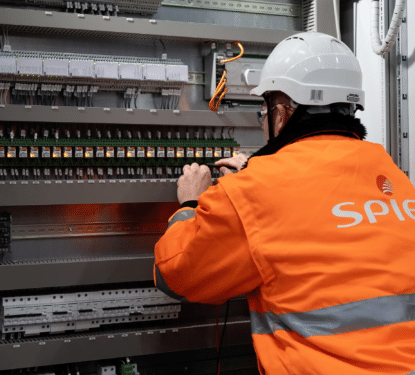Whilst growth in demand for video surveillance cameras slowed down in 2015 it was nevertheless a good year for almost all the major brands. Most predictions for 2016 look less promising as a result of forecast poor economic trading conditions, although recent terrorist activities could compensate for this. Whatever, the competitive landscape is intensifying and cranks up the need for suppliers to continually improve performance even to just maintain market share.
In this article we have abstracted data from our Annual Report to assess where we believe the main players sat in relation to each other in 2015 classified within one of four different groups. Our independent assessment is based mostly on qualitative data. Very few of the companies mentioned here are soley manufactures of cameras and published financial data is therefore not complete.

The market for video surveillance cameras is the most dynamic and the largest single product market in the Physical Security business. During the last 15 years it has received more investment to finance R&D programs than any other product, delivering the first IP Network camera and other innovative features, which have made drastic changes to the competitive landscape of the business. Few of the market leaders 15 years ago now hold that position and many of the companies established then have been acquired or fallen by the wayside.
The development of IP Network cameras pioneered by Axis Communications has been the main game changer and this has had most influence in reshaping the competitive landscape for video surveillance equipment. Those companies in the developed markets of the world that did not take up the challenge of moving into IP Network cameras fell by the wayside as demand for analogue declined in western markets. Those that moved over to IP late have struggled to keep up with the fast moving technology.
With the advent and introduction of the Internet of Things (IoT) there is a strong case to be made that the IP Network cameras will become the "Swiss Army Knife" of sensors within the brave new world of IoT.
The two largest producers of video surveillance equipment are now Chinese companies thanks to around 70% of their output being sold locally with most of this to the public sector. We have not identified any western manufacturer that is boasting significant penetration and high growth of video surveillance equipment in China.
From our database we have identified some 100 established manufacturers of Analogue and IP cameras across the world. They range from major international companies that manufacture the full range of Physical Security products including Video Surveillance equipment to specialist camera manufacturers.
From this list we selected 23 manufacturers of cameras to analyze their relative performance and positioning. In our report we show where we believe each company is positioned on the quadrant matrix within four classifications; Established Players, New Start/Early Stage, Challengers and Leaders. The Vertical Axis measures their Coefficient of Innovation and the horizontal axis identifies Financial Strength/Market Exposure/Growth/Share.
Established Players are companies that have been in the business for over 20 years, have a significant market share and brand and often install systems but today are not Leaders. New Start/Early Stage companies are companies formed within the last 15 years have innovative products but have not yet reached a challenging position. Challengers have innovative products, are growing fast and have the potential to move into the Leader quadrant. Leaders operate internationally, have a strong well-respected brand and are in the top quartile for market share and growth. It is not possible based on the availability of public information to be precise about the exact positioning of each company and some may straggle across two quadrants.
Our final list of 23 companies includes Axis, ACTi, Arecont, Avigilon, Bosch, Dahua, DVTel, Flir, HIKVision, Honeywell, Indigovision, Infinova, Mobotix, Panasonic, Pelco, Samsung, Silent Sentinel, Sony, Tyco, Vanderbilt, Vivotek, Ubiquiti and Uniview. We believe those listed are amongst the most notable performers in the camera business.
The 3 players in the Established Player Quadrant have been in the business for more than 20 years. Honeywell, Pelco by Schneider and Tyco are not currently Leaders because they entered rather late into developing IP Network cameras. In the case of Honeywell and Tyco they appear to have put more resources into their Video Surveillance systems business. Pelco prior to its acquisition by Schneider was the leading supplier in the USA of analogue cameras but it was rather late in developing the IP camera products, although now has a full range of IP Network products. It should be noted that these companies have a full range of physical security products.
We have identified seven companies in the New Start / Early Stage quadrant including ACTi, Arecont, DVTel, Indigovision, Mobotix, Silent Sentinel and Vivotek. These companies are specialist camera manufactures that have a well regarded product portfolio and some look set to achieve significant growth. However, Indigovision sales have declined this year.
The Challengers quadrant includes Avigilon, Flir, Infinova, Ubiqity and Uniview. These five companies have leading edge price competitive products and/or a strong market share in fast growing regions. Uniview is the number 3 manufacturers of cameras in China and is now in the process of establishing itself in the developed markets of the world. Flir and Ubiquitity have a strong hold on a niche market that promises fast growth prospects, thermal cameras and wireless communications.
Avigilon is the fastest growing Video Surveillance company in the West and has a solid financial base. All are now well established and growing fast but will need to continue investing capital to feed their growth in order to join the Leader quadrant. Infinova now based in the USA went public with an IPO on the Shenzhen Stock Exchange China in 2010. In 2012 it acquired March Networks Corporation, a leading provider of end-to-end IP video management solutions and in November 2014 acquired Swan Communications an Australian security and video surveillance manufacturer.
We have included seven companies in the Leader quadrant including Axis Communications, Bosch, Dahua, HIKVision, Panasonic, Samsung Techwin and Sony.
Axis, the technology leader in IP Network cameras has maintained strong growth over the last 10 years but this has fallen away slightly in 2015. Its IP technology is second to none. Its weakness along with virtually all western based companies is that it has not yet been able to successfully penetrate the China market and if it is to increase its market share it will need to improve its performance here. In addition during the last two years it has faced serious competition from the SMB market from now established Chinese manufacturers Hikvision and Dahua.
Conversely HIKVision is the leader in the China market and has now got a strong foothold in North America and some European markets. Not yet noted for leading edge IP products it offers one of the most price competitive camera portfolios in the world. With sales of $2.726 billion in 2014 they are the largest suppliers of Video Surveillance but 75% of this is sold in China mainly on systems contracts with possibly less than 70% accounting for hardware value. We shall have to wait and see how they perform in the IP products market longer term.
Bosch, Panasonic, Samsung and Sony have been in the Leader Quadrant for longer than the other three companies. They are unlikely to lose this status but will have to work hard to maintain their position as they are also under threat from Hikvision and companies in the Challengers quadrant.
All the information above was taken from our report 'The Physical Security Business 2015 to 2020; Access Control, Intruder Alarms & Video Surveillance' available for purchase here - http://memoori.com/portfolio/physical-security-business-2015-access-control-video-surveillance/
[contact-form-7 id="3204" title="memoori-newsletter"]



